Are you ready to build your future?
Looking for an inspiring work environment and challenging job? Read more about our vacancies, the colleagues you’d be joining and the application process using the button below. Join 4PS today!


The construction industry is under immense pressure. Surging commodity prices, labour shortages, and a lack of industry standardisation combine to create a perfect storm. The result? Spiralling project costs, endless delays, inefficiencies, and a hesitancy among investors.
Even before the recent troubles, the construction sector faced challenges.
Construction projects often involve multiple teams, trades, and stakeholders who must work together seamlessly to coordinate and collaborate effectively. Any miscommunication or error can ripple through the system, causing delays and cost overruns. Little wonder that 90% of construction projects are “behind schedule.”
While most industries have relied on automation to paper over labour shortages and skills gaps, the construction sector doesn’t have that option. Robots aren’t going to be building homes anytime soon.
The industry is facing a severe skills shortage. Already, 400,000 people in the UK are waiting more than a year to secure a builder. That might be acceptable if the nation were rising to fill the gap. However, estimates from Capital Economics and Checkatrade suggest that, of the 244,000 apprentices needed by 2032, the current government plans for only 60,000 new entrants.
The only things certain in life are death, taxes… and construction cost overruns. Initial estimates are often based on material and labour costs at the time. But, as we’ve seen in recent years, global events can spike material costs, precipitating spiralling project costs.
Furthermore, any delay – no matter how small – forces the project’s finish date forward. The longer it takes, the more it costs.
Project delays and inefficiencies go hand-in-hand with cost overruns and budget inaccuracies. With multiple teams working on the same project, any issue faced by one team impacts all other parts of the system.
Factor in changing client expectations or new rules and regulations, and project delays become the norm, not the exception.
Deadlines slip, communication breaks down, and teams waste time chasing updates instead of moving forward. Without a centralised system to track progress and flag issues early, small problems can escalate into costly setbacks.
Miscommunication is likely the primary cause of issues in construction projects. Too often, companies rely on email and text to coordinate between stakeholders and vendors. If someone forgets to forward an email (or loop a key stakeholder in), messages can get lost.
Soon enough, you’re waiting for a window delivery that’s never coming or realising that an already completed section of the project no longer matches the client’s new requests.
Construction supply chains are complex, global, and highly vulnerable to disruption. A single missing component, whether a steel beam or a shipment of tiles, can grind progress to a halt.
COVID-19 demonstrated the dangers of modern logistics chains. Material shortages, shipping delays, and price volatility have become the norm, not the exception.
Without end-to-end visibility and contingency planning, construction firms are forced into reactive mode, absorbing rising costs or delaying timelines to source alternatives.
Let’s be honest: the construction industry is resistant to technological innovation. There’s a mentality of, if it ain’t broke, don’t fix it.
There’s an undeniable logic to that in the short term. However, ignoring cloud-based document storage, modern communication methods, and project management platforms prevents firms from reducing inefficiencies and streamlining their service.
Even when companies begin to shift, a lack of training or other integration challenges prevents the technology from being used to its full potential.
Construction remains one of the most dangerous industries in the world. From slips and trips to equipment failures and regulatory breaches, the risks are constant.
The challenge isn’t just keeping workers safe. It’s also staying compliant with ever-evolving health and safety legislation. Poor documentation, lack of oversight, and fragmented reporting all increase the likelihood of violations and accidents.
You might think that, given these substantial challenges, you wouldn’t try to add anything else. Well, not so fast.
ESG (Environmental, Social, and Governance) compliance, waste management, and carbon reduction targets present new challenges for construction firms to address.
Reducing industry inefficiencies, saving costs, and shortening timelines while also reducing emissions and opening up the sector isn’t easy. But balancing environmental responsibility with profitability is no longer optional. It’s a core requirement for staying competitive, accessing financial support, and securing future projects.
Remedying these pain points might sound like a colossal undertaking. However, by targeting specific issues, you can address multiple challenges simultaneously.
Here are some smart recommendations:
4PS understands the pressures that construction businesses face, including tight margins, constant delays, and rising expectations. We’ve built powerful, industry-specific solutions to give you greater control over your projects, people, and profit.
Whether you’re looking to improve cost forecasting, streamline communication, or futureproof your operations with the latest construction tech, 4PS Construct gives you the tools to make it happen.
Book a demo today and discover how 4PS can help you tackle your biggest pain points.
Looking for an inspiring work environment and challenging job? Read more about our vacancies, the colleagues you’d be joining and the application process using the button below. Join 4PS today!
Please fill in your name and E-mail to download this file.